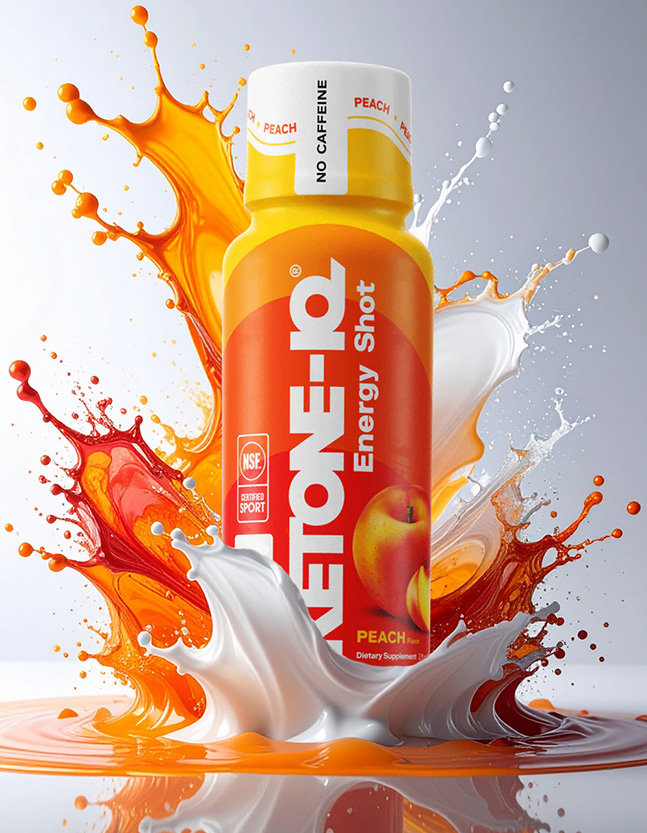Executive Summary
A comprehensive analysis of Ketone.com reveals a robust foundation built on a scientifically validated product and strong partnerships. The site’s value proposition is clear, and it employs several key trust signals to build credibility. Despite these strengths, significant user experience (UX) and conversion rate optimization (CRO) challenges appear to be hindering the user journey. The primary issues stem from a cluttered homepage with an ambiguous information hierarchy, a complex product configuration process that induces cognitive overload, and critical inconsistencies in the display of social proof.
The most impactful opportunities for improvement lie in simplifying the entire user journey, from the moment a user arrives on the homepage to the point of purchase. This can be achieved by clarifying the value proposition for distinct user segments, streamlining the product selection process, and more effectively leveraging existing trust signals and scientific credibility. Addressing these areas will not only enhance the user experience but will also directly contribute to higher conversion rates and sustained customer retention.
The highest-impact recommendations include a strategic redesign of the homepage to guide users with a simplified, benefit-driven narrative; a complete overhaul of the product pages to mitigate the complexity of choice; and a systematic effort to ensure all trust-building elements, particularly customer reviews and scientific validation, are consistently and prominently displayed across the entire site.
Current State Analysis: The Homepage and Core Navigation
The homepage of an e-commerce site serves as the critical first impression and primary entry point for new visitors. Its design and information hierarchy are paramount for communicating the brand’s value and guiding users toward conversion.
Evaluating the Value Proposition and Information Hierarchy
The Ketone.com homepage presents a clear overview of its core products, including the “No Caffeine Shot” and the “+ Caffeine Shot” options. It highlights the primary benefits of the product, such as a “boost in focus, endurance, and performance,” and features key value-adds like free U.S. shipping and a 60-day money-back guarantee. This content establishes a solid foundation for the brand.
However, a closer examination of the available content reveals a potential fragmentation within the target audience. The homepage prominently features a partnership with Team Visma | Lease a Bike, which is a powerful signal of credibility for elite athletes and performance-oriented users. At the same time, testimonials on the product pages come from a more general audience, including a senior executive who uses the product for focus in high-stakes meetings, and other individuals who find it effective for managing “brain fog” and appetite suppression. This indicates that the product appeals to at least two distinct user personas: the high-performance athlete and the general wellness consumer. When the homepage design attempts to cater to both simultaneously without a clear pathway for each, it risks alienating one or both. The general wellness user might be intimidated by the elite athletic focus, while the athlete might not connect with testimonials about cognitive benefits as much as they would with data on power output or endurance. A cluttered or unfocused homepage, as noted in general e-commerce usability studies, can overwhelm users and prevent them from finding the most relevant information.
Critique of the Main Navigation and User Onboarding Journey
The main navigation menu on Ketone.com is intuitive, providing clear links to “Shop Ketone-IQ,” “Reviews,” “Science,” and “About Us”. The inclusion of dedicated pages for “Reviews” and “Science” is a strong strategic decision for a health supplement brand, as these sections are crucial for building the trust and credibility necessary to drive a purchase.
However, a significant breakdown in the user journey occurs when a user follows these trust signals. While the homepage navigation promises access to reviews, a visit to the product page for Ketone-IQ’s “Green Apple Shot” shows a review count of “(0)”. This creates a critical trust gap that can lead to immediate user abandonment. A user is promised social proof, a key factor in building confidence, but upon reaching the product, the promise is unfulfilled. This inconsistency is a major usability flaw that undermines the integrity of the site’s information. It is not merely a cosmetic issue; it is a business-level problem that directly impacts conversion by breeding doubt and skepticism.
Assessment of Calls-to-Action (CTAs) and Visual Flow
The site utilizes strong promotional offers and trust signals as calls-to-action, such as free U.S. shipping and a 60-day money-back guarantee. In a simplified layout, the prominence and placement of these CTAs are crucial for guiding the user’s eye and encouraging action. The effectiveness of the site’s visual flow depends on its ability to present these key messages without visual clutter, directing users from a clear value proposition to the desired conversion action. This is particularly important on mobile devices, where a simplified interface is critical to a high-performing e-commerce site.
Current State Analysis: The Product Pages and Conversion Funnel
The product pages are the final and most critical stage of the e-commerce conversion funnel. Their layout and design must effectively overcome user objections and simplify the path to purchase.
Detailed Breakdown of the Product Page Layout and Content Presentation
The product page follows a standard e-commerce format, featuring a prominent display of product images, a description of benefits, and a clear distinction between subscription and one-time purchase options. It also provides additional details on product usage and shipping.
However, the product configuration process presents a significant barrier to conversion. The page offers a multitude of simultaneous choices, including “formats (Shot or Multiserving), flavors (Peach, Original, Green Apple, Raspberry Lemonade, Variety), quantities (24, 48, 144, 288 shots), and a choice between a subscription or a one-time order”. While offering choice can be beneficial, presenting a large number of variables at once, especially for a new or first-time buyer of a complex product, can lead to cognitive overload. This well-documented psychological phenomenon, known as the “paradox of choice,” can result in analysis paralysis, causing users to abandon the purchase altogether rather than making a decision.
Analysis of Pricing and Subscription Models for Clarity and Appeal
The pricing structure on Ketone.com clearly differentiates between a one-time purchase ($120.00) and a monthly subscription ($108.00).7 The subscription model is further incentivized with a 10% lifetime discount, a 30% discount on the first month, and a free 6-pack of product on the second month. While these offers are compelling, their multi-tiered and staggered nature can be difficult for a user to process quickly. A user may struggle to calculate the total savings or understand the full value of the commitment at a glance. In the health and wellness market, where financial transparency is paramount, presenting clear and honest pricing is a key factor in building trust and driving conversions.
Review of Social Proof, Trust Signals, and the Add to Cart Process
The product pages include several elements designed to build trust, such as links to reviews and mentions of partners. A key finding from the testimonials is the consistent mention of a potential drawback: the “unique taste” or “cough syrup aspect” of the product. While the presence of this critical feedback demonstrates authenticity, it also creates a significant point of friction for risk-averse, first-time customers. A best-in-class wellness website would proactively address such concerns directly on the product page. By acknowledging this potential issue and providing a solution—for example, by suggesting mixing the product with sparkling water or framing the taste as a necessary trade-off for its potency—the site can convert a potential negative into a powerful demonstration of transparency and trust.
Strategic Recommendations for Enhancing the Homepage
Simplifying the Information Architecture and Prioritizing Key CTAs
To address the fragmented audience and visual clutter, the homepage should be redesigned with a narrative structure that guides the user from a known pain point to the product’s solution. A “problem-solution” flow could feature a hero section that directly addresses a common issue like a “mid-day slump,” followed by a prominent, benefit-driven call-to-action to “Get High-Performance Energy without the crash.” The content hierarchy should be simplified, using succinct overviews with progressive disclosure for deeper details, as recommended by healthcare design best practices.
Optimizing Content for Clarity and Trust
For a novel and scientifically advanced product, trust is paramount. While Ketone.com has a “Science” page, it can be enhanced by adopting the authoritative, evidence-based models of sites like
Examine.com and ConsumerLab.com. A key opportunity is to humanize the science by featuring the researchers or founders behind the product. Including their qualifications, research background, and personal passion for the product can transform the brand from a faceless e-commerce site into a trusted authority in the health and wellness space, significantly boosting credibility and conversion.
Leveraging Social Proof and Partnerships More Effectively
To speak to its diverse audience, the homepage should prominently feature a variety of testimonials, including those from elite athletes, corporate executives, and general wellness users. Additionally, all review counts and trust signals must be accurate and consistent across the entire website. The discrepancy between a promise of reviews on the homepage and a “(0)” count on the product page must be resolved immediately to prevent the critical trust gap that leads to user abandonment.
Tactical Recommendations for Optimizing Product Pages
Streamlining the Selection and Purchase Flow
The complex product configuration is a major conversion hurdle. Instead of presenting a large, overwhelming grid of options, the product page should be redesigned to offer a more guided, progressive decision-making process, particularly on mobile devices. This can be achieved by:
- Default Selection: Presenting a pre-selected “Most Popular” or “Best Value” option as the default to guide users and reduce the initial cognitive load.
- Step-by-Step Selector: Implementing a multi-step guided selector that asks the user to choose one variable at a time (e.g., “Step 1: Choose Your Product Type,” then “Step 2: Choose Your Quantity”). This breaks down the decision into manageable, low-friction steps.
Communicating the Subscription Value Proposition with Greater Clarity
To make the subscription offer more compelling and easier to understand, the pricing display should be redesigned. A clear side-by-side comparison table can visually contrast the one-time purchase price with the subscription cost, summarizing the total value in a single, prominent headline (e.g., “Save 30% + Get a Free Gift When You Subscribe”). The flexibility of the subscription, including the ability to “pause, adjust, or cancel anytime,” should be prominently displayed to mitigate user fears about commitment.
Enhancing Credibility Through More Robust Reviews and Testimonial Display
The product page must integrate a dynamic review section that displays actual customer feedback, rather than a review count placeholder. This section should include reviews from a diverse range of users and highlight specific benefits. The brand can also proactively address the taste issue by adding a dedicated content block on the product page that acknowledges the “unique taste” and offers mixing suggestions or context, framing it as a trade-off for the product’s effectiveness and unique benefits. This level of transparency builds significant confidence and can convert a potential objection into a positive, trustworthy interaction.




